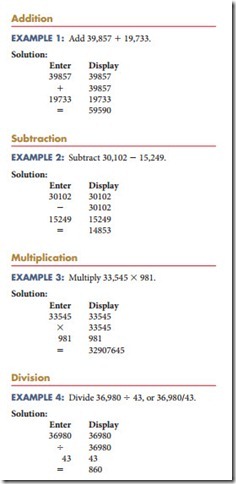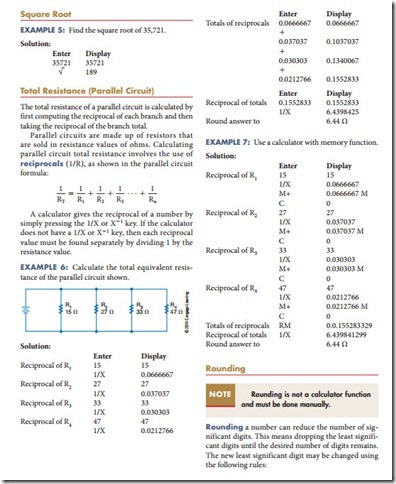using The Calculator for electricity and electronics
If operators do not understand principles of the mathematical process, they will not be able to properly enter data into a calculator, nor will they be able to correctly interpret the results. mathematical skills still count. Even when all data is entered correctly, the answer may be incorrect due to battery failure or other conditions.
The following examples show how a calculator is used to solve various types of problems in electronics. Turn on your calculator. Examine the keyboard. Let’s do some calculating.
If the highest significant digit dropped is
● less than 5, the new significant digit is not changed.
● greater than 5, the new significant digit is increased by 1.
● 5, the new significant digit is not changed if it is even.
● 5, the new significant digit is increased by 1 if it is odd.
example 8: Round 352.580.
Rounded to the nearest tenth: 352.6
Rounded to the nearest whole number: 352
Rounded to the nearest hundred: 400
These rules result in a rounding off technique that
Questions
1. Why are mathematical skills necessary when using a calculator?
2. using a calculator, verify the answers for the seven examples shown in this chapter.
3. What is the function of X21?
4. How can the X21 be used to multiply the numerator and the denominator?
5. Explain why Examples 6 and 7 have different answers.

